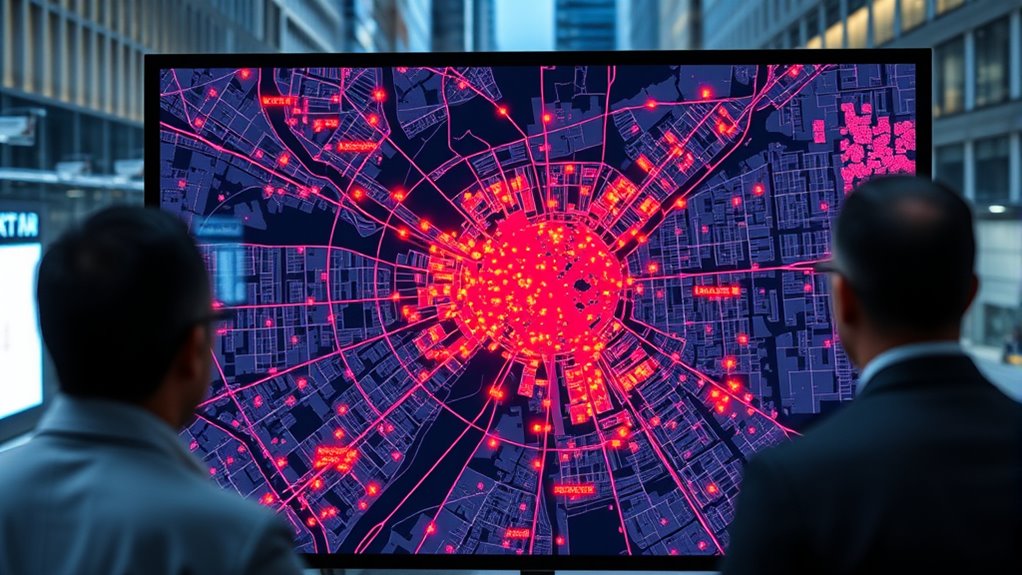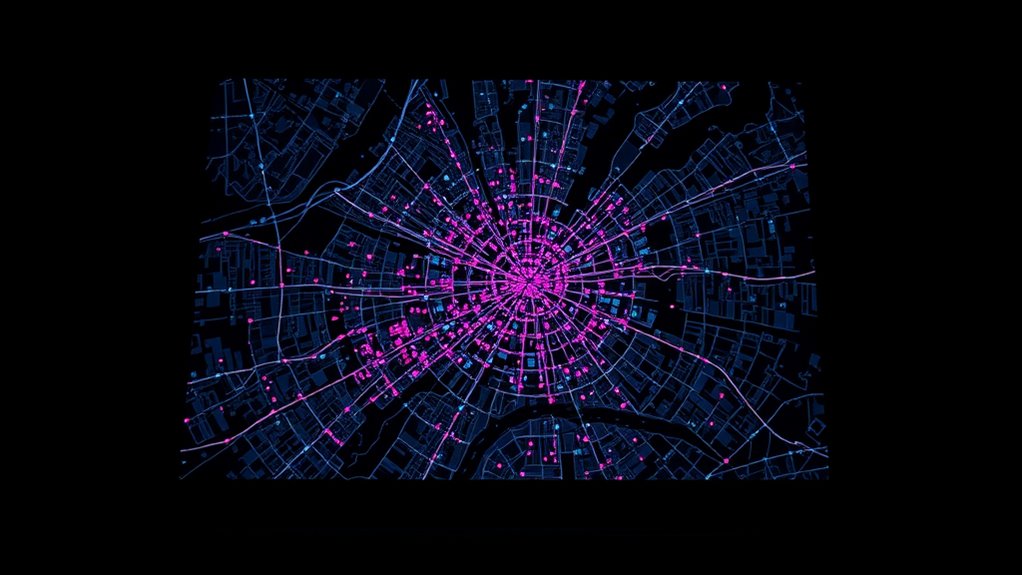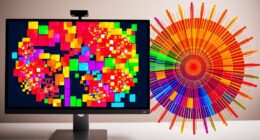Criminology crime mapping helps you understand crime patterns by turning complex data into visual geographic images. It shows where crimes happen most often, highlighting hotspots to focus law enforcement efforts. By analyzing trends over time and combining offender profiling, you gain deeper insights into why crimes occur and how offenders operate. This powerful approach gets you closer to solving cases and preventing future crimes. Keep exploring to discover how these techniques can work for you.
Key Takeaways
- Crime mapping visualizes spatial crime data to identify patterns, hotspots, and allocate resources effectively.
- Offender profiling enhances maps by analyzing behavioral patterns, aiding in suspect identification and predicting future crimes.
- Trend analysis reveals temporal shifts in crime, supporting proactive prevention strategies and evaluating intervention effectiveness.
- Integrating profiling and trend data transforms crime maps into strategic tools for understanding and combating criminal activity.
- Overall, crime mapping empowers law enforcement and communities to prevent crime proactively and improve urban safety.

Crime mapping has become an essential tool in criminology, helping law enforcement and communities understand where crimes occur and identify patterns. By visualizing crime data geographically, you can spot hotspots, track recurring issues, and allocate resources more effectively. But crime mapping isn’t just about plotting dots on a map; it also involves sophisticated techniques like offender profiling and crime trend analysis, which deepen your understanding of criminal behavior.
Offender profiling plays a pivotal role in crime mapping. When you analyze spatial data alongside behavioral patterns, you gain insights into the characteristics and routines of offenders. For instance, by studying where crimes happen relative to offender residences or frequented locations, you can develop profiles that help predict future activity. Profiling enables you to identify potential suspects or understand the motives behind a series of crimes, especially when patterns emerge across different locations. This process makes your crime maps more than just visual tools—transforming them into strategic instruments for investigative focus.
Crime trend analysis complements offender profiling by revealing larger-scale patterns over time. As you analyze spatial data across months or years, you notice shifts in crime types, times, or locations. Recognizing these trends allows you to anticipate future crimes and adapt prevention strategies accordingly. For example, if you observe an increase in burglaries during holiday seasons in specific neighborhoods, law enforcement can increase patrols or community outreach during those times. Trend analysis also helps you evaluate the effectiveness of interventions, demonstrating whether crime rates decrease following specific initiatives.
Together, offender profiling and crime trend analysis turn raw crime maps into powerful intelligence tools. They help you understand not just where crimes happen, but why they happen in certain places and how offenders operate within the urban fabric. This integrated approach enhances your ability to prevent crimes before they occur and to catch offenders more efficiently. As you deepen your understanding of these analytical methods, you become better equipped to develop targeted strategies for crime reduction.
Ultimately, crime mapping that incorporates offender profiling and trend analysis empowers you to see the bigger picture. Instead of reacting to individual incidents, you can proactively address underlying issues and disrupt criminal patterns. Whether you’re a law enforcement officer, community leader, or researcher, mastering these techniques makes your crime maps more insightful, strategic, and impactful. By leveraging spatial data with behavioral and temporal analysis, you elevate your understanding of criminal activity, making communities safer and crime prevention more effective. Understanding the role of contrast ratio and color accuracy in imaging quality can further improve the interpretation of visual data in crime analysis.
Frequently Asked Questions
How Accurate Are Crime Maps in Predicting Future Crimes?
Crime maps can provide useful insights, but their predictive accuracy isn’t perfect. You should know that data reliability varies, and many factors influence future crimes. While maps can highlight hotspots and trends, they aren’t foolproof predictors. Use them as a tool to inform your understanding, but don’t rely solely on them for predicting specific crimes. Combining maps with other data sources offers a more thorough overview of potential risks.
What Privacy Concerns Are Associated With Crime Mapping Technology?
When considering privacy concerns with crime mapping technology, you might worry about data privacy and surveillance concerns. These maps often rely on location data and crime reports, which can expose personal information or lead to misuse. Surveillance concerns grow when authorities track individuals without consent, potentially infringing on your privacy rights. It is crucial to balance public safety benefits with protecting personal data and ensuring transparency in how crime data is collected and used.
Can Crime Maps Be Manipulated to Mislead the Public?
You might wonder if crime maps can be manipulated to mislead the public. Yes, data manipulation can distort the true crime picture, intentionally or unintentionally, by cherry-picking data or misrepresenting patterns. However, applying bias correction techniques helps guarantee maps are accurate and trustworthy. Always question the source, check for transparency, and consider multiple data points to get a clearer, honest view of crime trends.
How Do Different Criminology Theories Influence Crime Mapping?
Like Sherlock Holmes piecing clues together, your understanding of criminology theories shapes how crime maps are created. You see that theories such as social disorganization or routine activities influence the use of predictive analytics, highlighting patterns and hotspots. Community engagement becomes essential, as it helps validate data and build trust. Recognizing these influences ensures you interpret crime maps accurately, avoiding misconceptions and fostering effective crime prevention strategies.
What Are the Limitations of Current Crime Mapping Methods?
You should recognize that current crime mapping methods face limitations like data accuracy issues, which can lead to misinterpretations of crime patterns. Inaccurate or incomplete data hampers effective resource allocation, causing resources to be misdirected or wasted. Additionally, these methods often struggle to account for the dynamic nature of crime, making it difficult to develop timely and precise strategies for crime prevention.
Conclusion
Now that you’ve navigated the nuances of criminology and crime mapping, you see how data drives decisions and deters danger. Dive deeper, discover details, and develop a daring dedication to understanding crime’s complexities. With every map you master, you make a meaningful mark, minimizing misdeeds and maximizing safety. Embrace this enlightening exploration, empower your passion, and play a pivotal role in preventing pitfalls. Your proactive pursuit promotes peace, progress, and protection for all.










